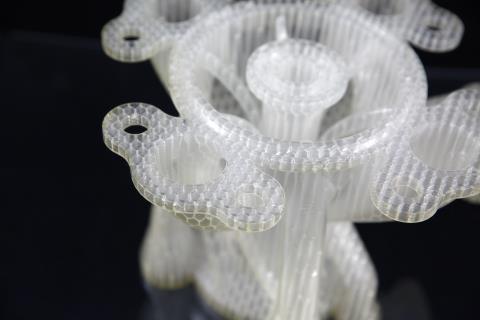It starts with terms like “additive manufacturing process” and “rapid prototyping”. And it goes downhill from there with more technical language like “fused deposition modeling” and “stereolithography”. And we haven’t even touched on the acronyms like “SPJ” and “SLA”.
The language of 3D printers can be daunting at first, but there are rays of hope. For example, two of the terms in the first paragraph refer to the same 3D printing technology – find out about one and scratch two off your list of 3D terms to learn. So the next time you wonder “what is stereolithography?”, you’ll know that its acronym is SLA.
SLA has been around for over 30 years, being one of the first 3D printing processes commercially available on the market. It has gone through significant changes as application interest grew and companies realized the benefits of working with 3D printing technology. In the early days machines were big and bulky and offered a very small build volume and were very slow to print parts. Unlike today where machines like the Stratasys V650 Flex can have high volumes of parts printed in a relatively short period of time or even some desktop SLA 3D printers can handle the same type of rapid prototyping projects that were common in the early days of SLA. With advances in material research, improvements to lasers, and a more experienced user-base, SLA is now one of the most versatile additive manufacturing processes with a range of materials for different applications like investment casting and product development. The Automotive industry is no stranger to SLA, favoring it over other technologies for its relatively low-cost but ability to manufacture larger parts like car doors and bumpers.
Interested in trying SLA 3D printing for yourself? Work with our service bureau
This is Stereolithography (SLA)
Just to finish up the name and how you get “SLA” from “stereolithography”: stereolithography is the 3D print process you get from a stereolithography apparatus (SLA), which is the type of 3D printer you need for “SLA 3D printing”, which is really the most common term used to refer to stereolithography.
With that out of the way, let’s learn some more about SLA 3D printing and SLA machines.
- SLA is one of the three most widely used 3D printing systems. The others are (ready for more 3D terms?) FDM, or fused deposition modeling and SLS, or selective laser sintering.
- Using 3D CAD data, SLA produces smooth-surfaced finished parts and products from liquid plastic (photopolymer). An ultraviolet laser beam converts the liquid plastic into a solid as it is “painted” by the printer in cross-sections, layer by layer, until the part or product is complete
- One of the reasons for its popularity is the versatility of the photopolymer in making a wide range of shapes to precise specifications. Tolerances for SLA parts are usually less than .05 mm, and the final output sports the smoothest finishes of any 3D system.
- SLA is commonly used to print medical models of parts of the human anatomy to aid in diagnosis, operational planning and the design and manufacture of implants.
If you want to learn more about another 3D printing term, check out our article “The Advantages of 3D Printers for Rapid Prototyping”.
